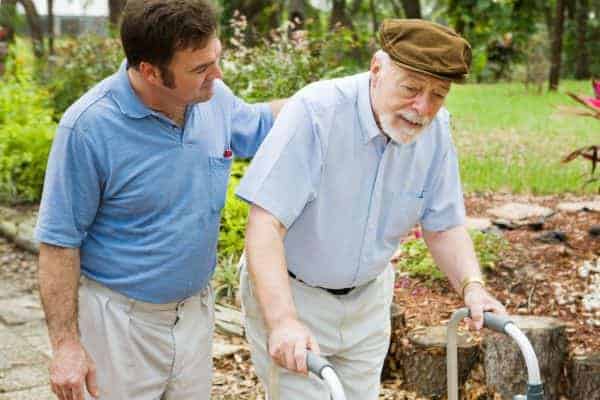Care at home is naturally a popular option for many older people facing issues as they age and finding themselves with a need for support in later life. Remaining in familiar surroundings is good for both physical and mental health and wellbeing – and for this reason it’s often favoured by both the person needing care and their families. Yet finding the right live-in care at home can be challenging. Without the necessary equipment and mobility aids, staying at home can prove to be difficult and where mobility is affected, the risk of falling increases.
Today, there are more gadgets and mobility aids coming into the market. There are several key items that can make a real difference to those needing care and their caregivers. Here we present six essentials to help you to receive care in your own home safely alongside professional support.
Ramps, handles and rails
Getting around in the home with a mobility issue can be exhausting – but more importantly, it can be dangerous. Although they are simple and inexpensive , standard aids such as handrails and ramps make all the difference. Having handrails can significantly reduce the risk of falls and makes moving about much easier and safer. Ramps provide easy wheelchair access.
Walking aids
In addition, walking aids for use both in and out of the home are useful for anyone with mobility issues. These range from simple walking sticks and crutches to more sophisticated frames. Some have seats in-built and room for shopping and storage. These are perfect for support and stability as people navigate their home and their local environment.
Lift and recline chairs
The difficult thing about failing mobility is that you need to remain as active as possible to avoid it getting worse. Even when the person doesn’t feel like it or when they are experiencing pain or discomfort as a result. Plenty of rest is also important, that said sometimes getting up and out of a chair can be difficult. Lift and recline chairs have a range of useful functions. Primarily they enable people to easily sit down and get up without outside assistance. This helps them to maintain independence. Reclining chairs can also help people relax and can be used for rest during the day and in the evening.
Bathroom aids
Washing and dressing is a necessary daily task that can be incredibly difficult for those with mobility issues. Fortunately there are plenty of bathroom solutions available, ranging from affordable gadgets to specialised baths, showers and toilet facilities. Your choice between permanent fixtures and temporary solutions will depend on your circumstances and how much you have to spend. If your budget is fairly low but you need a short-term solution quickly, shower seats, grab rails and swivel seats or hoists will enable you to wash safely and are great affordable options. For people who will be staying at home for the foreseeable future a wet room may be worthwhile. Note, these are provided free by the NHS where the need is assessed.
Commodes
A commode is a temporary arrangement – but can be incredibly useful. Especially while making modifications to their home such as installing a downstairs toilet. Commodes are portable and can be moved anywhere in the home. So they are ideal for people who are temporarily incapacitated or are waiting for a better long-term solution.
Stair lifts
If the person needing support is unable to move from their existing home or indeed doesn’t want to, but need to navigate one or more flights of stairs to use the bathroom or go to bed, a stair lift is a worthy investme
nt. A stair lift enables loved ones to swiftly, easily and safely navigate stairs – even awkward, narrow or steep staircases. They can to be fitted in a wide range of homes, and there are different types, makes and models to choose from. Although some may feel embarrassed or feel a stair lift is unnecessary, having one fitted can substantially extend the time an individual with mobility issues can remain in their own home.
For more assistance with later life care and for information on live-in care provision, please use our find a live-in care provider service.

